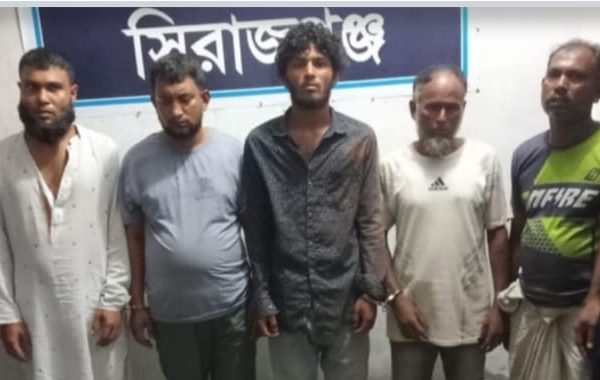Dusty gray capital, air quality is fluctuating
- Update Time : Wednesday, December 16, 2020

FBD Desk;
With the onset of winter, the dust in the capital has increased. Many areas of Mirpur, Kazipara, Shewrapara, Farmgate, Karwan Bazar, Banglamotor, Shahbag, Press Club, Paltan and Motijheel are now dusty due to various construction works including Metrorail, road-ghat widening. Although the city corporation has sprinkled water on the main roads of these areas, it is not doing much good.
On Tuesday (December 15th), bus driver Monir Jago told Karwan Bazar that it was difficult to drive on the roads in Dhula. Passengers do not want to get up if there is dust and dirt in the car. We clean the car after every trip. But as soon as the bus gets on the road, it gets full of dust.
Environmentalists and urban planners say mega projects are being built without regard to rules and regulations. The waste management system has been neglected.
According to IQ Air’s website around 12:30 pm on Wednesday (December 16), Dhaka ranks second among polluted cities with an air quality of 221. Bishkek of Kyrgyzstan is in the first place with a score of 260 and Delhi of India is in the third place with a score of 191.
Environmentalists say air quality is much worse this time around than in the past few years. The amount of dust in the capital has also increased as compared to other times.
Stamford University, Bangladesh, Professor of Environmental Sciences. Ahmed Kamruzzaman Majumder told Jago News that air pollution in December 2020 was about 20 percent higher than in December 2019. The air quality was 163 in December last year, this year the air quality has gone up to 232 in December. Compared to last year, the air quality has increased by 20 percent this year.
He added that the worst weather in Dhaka on December 7 this year was the worst. The air value on that day was 310. The first week of December this year was the most polluted in the last 3 years. If the temperature and air velocity do not increase, it may increase further.
The air in the capital has not been bad for so long. Kamruzzaman said it had never been such a long time. Analyzing the data of the last 4-5 years, it has been seen that usually four to five times such an environment is created in the whole year from November to February. It lasts for 5 to 7 days. But this time it has been seen that this situation is staying for 10 to 12 days.
He said the wind usually blows from the Bay of Bengal or from the south-east. When air comes from the sea, that air stays pure. But in winter, when the wind does not come from the south-east, the wind speed decreases a lot. It comes from the north at a speed of 3-4 kilometers per hour.
Dr. Kamruzzaman said that this air flow cannot remove smoke, dust or pollution from any place. Because, the wind speed is less. At other times this smoke and dust would carry the wind from the south to the north. It was deposited in the Himalayas. In winter, winter and other winds blow from the Himalayas to the north-east. It has low speed. But it does bring in black carbon and other polluted air. This means that the speed of the wind is low and when the wind comes again it brings dust and sand. Again when the temperature decreases, this heat contains water vapor. This water vapor soaks the dust into the sand. As a result, they cannot fly away. Goes to the lower level.
This environmentalist also says that our brick kiln is also the reason for the increase in dust in our mega projects. In addition building construction increases in winter. The use of brick-sand also increased. There are about 50 cement factories and about 1,300 brickfields around Dhaka. At this time their production also increased. At this time the road digging also increased.
In this context, the urban planner and general secretary of the Bangladesh Institute of Planners. Adilur Rahman told Jago News that the level of pollution in digging during winter is a little higher. Being a developing country, the amount of building construction is a little higher. Here we see a lot of indifference in construction management. Extreme indifference can be noticed in various fields including monitoring. The construction companies have been given some kind of guideline by the government. But they don’t mean that. The companies are not paying attention to any rules and regulations.
He added that the city corporation was negligent in understanding the tasks. Those who are under supervision to understand the projects are very weak in monitoring. Those who are doing the projects taking advantage of this weakness are also neglecting. If you look at those places, the amount of dust will decrease even if it is a little bit.
Due to the coronavirus, the buses could not run on the roads for 6 months and their engines and fitness were damaged. As a result, now that the buses are coming out on the road, they also think that they are polluting the air. Ahmad Kamruzzaman.
He said traffic was closed due to Corona. The buses did not run on the road for a long time. From 6 to 8 sitting without any kind of maintenance or servicing the buses on the road. As a result, their engine has been damaged. No one is noticing these. There is a lot of pollution from all the cars.
The environmentalist said that during the winter, polluted air enters the country from parts of Pakistan besides Madhya Pradesh, Punjab and Haryana. This is what we call transboundary air pollution. In November-December, in some provinces of India, they burn a lot of grass and other crops. These crops start burning from the first week of November. It can be seen that air pollution occurred in Delhi on November 25-26. The distance from Delhi to Dhaka is 1400 km, which takes 6 to 7 days to reach Dhaka. That is, air pollution occurs in Delhi at the end of November. As a result, air pollution in Dhaka increased from 5 to 6 December. (Source: Online)














